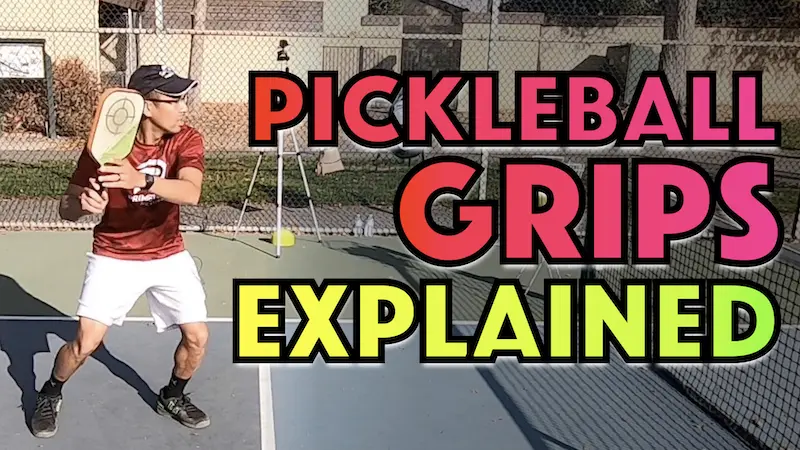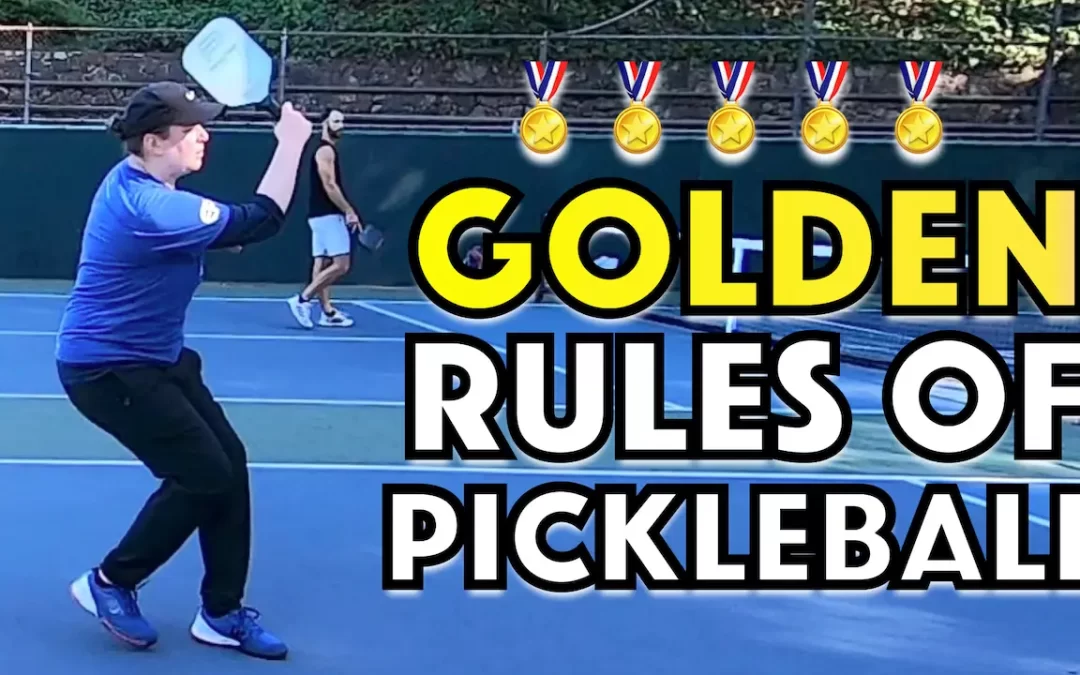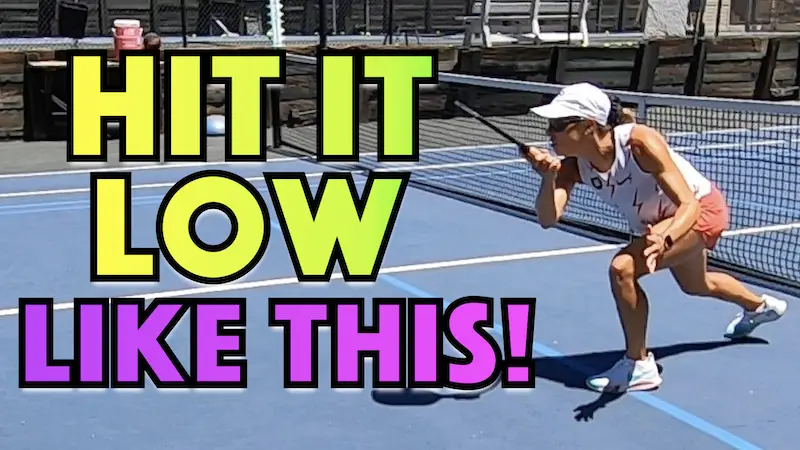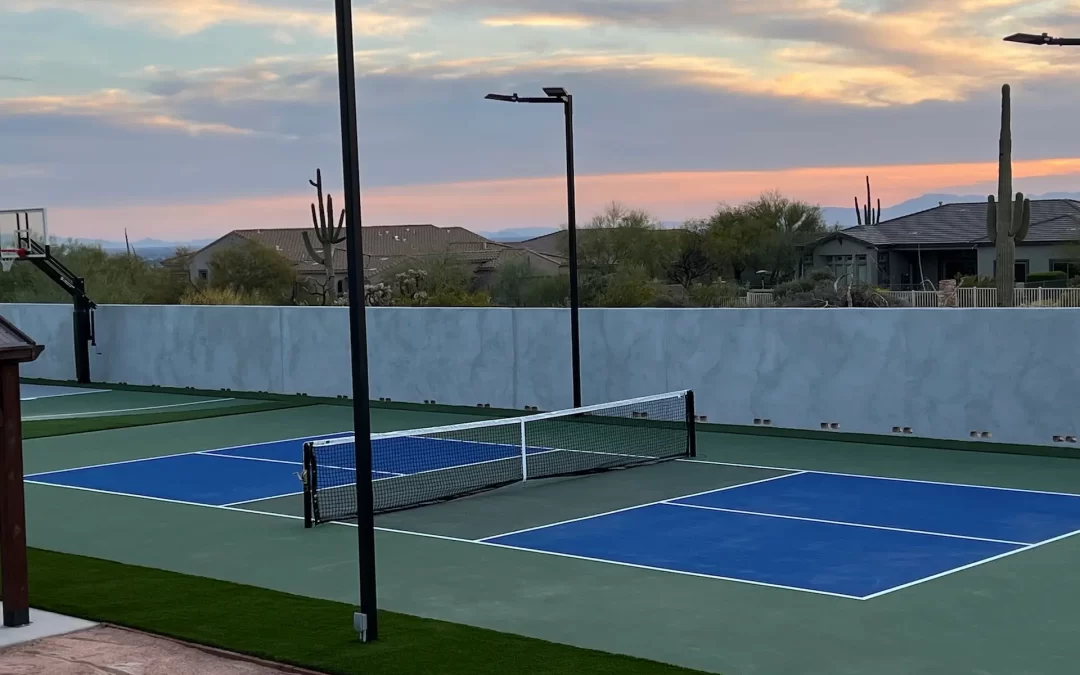The transition from other racquet sports to pickleball is pretty straightforward in large part thanks to the stroke production being fairly similar in a lot of cases.
It’s then a matter of getting used to the pickleball specific equipment, courts and rules.
Getting to grips with the size differences and markings can take a little getting used to. This is especially true for tennis players who are used to a larger playing area.
This is not so for badminton players, as the total court dimensions are the same.
So, let’s look at how the dimensions of a pickleball court compare to other court sizes. We’ll look at a pickleball court size in feet, the height of the net, and how best to set up your pickleball court.
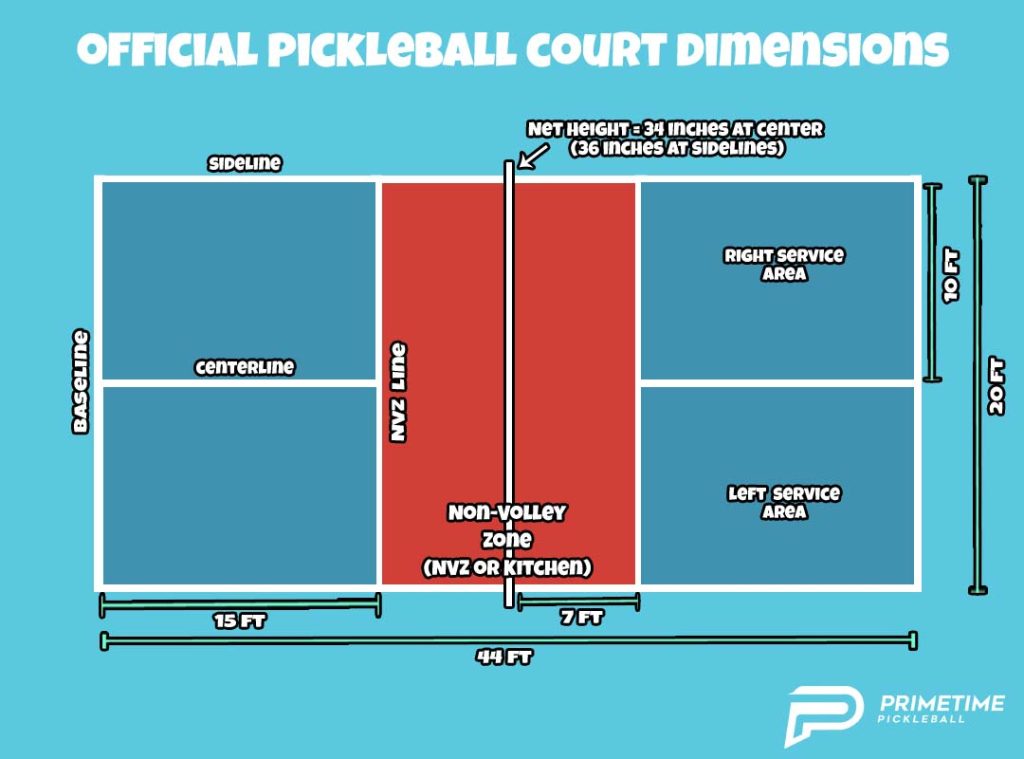
Pickleball Court Dimensions
To simplify matters, both singles and doubles are played on the same sized court.
All the following measurements are taken from the outside of the lines.
2-inch wide court tape is available or you can use line-marking paint to mark permanent lines on your court.
Franklin sports manufactures a kit of temporary plastic strips specifically for marking off a pickleball court. You can lay them down on any hard court surface (like a tennis court) and, paired with a portable net, provide adequate markings to play regulation pickleball.
Are you ready to get into the actual pickleball court size specifications?
Regulation Pickleball Court Dimensions
The official pickleball standard-sized court is 44-feet long from baseline to baseline and it is 20-feet wide from sideline to sideline.
A 7-foot non-volley zone extends from each side of the net. The non-volley zone line defines the area referred to as the kitchen.
That leaves 15’ feet from the non-volley zone line to the baseline. A centerline separates this area into two 15-feet wide halves. This center line is used to denote the right and left service areas on each side.
Out of Bounds Area
To ensure players’ safety and to provide space for players to move around the court, an out-of-bounds area is required.
The out-of-bounds area is not specified in official pickleball regulations, but you need enough space for both safety and vigorous play.
It’s recommended that the minimum playing surface area measures at least 54’ X 24’.
However, athletic players require more space to move around. So, a total court size of 64′ x 34′ is therefore considered ideal.
To summarize, you have 22-feet on each side of the net within which a shot is considered to be in.
The front portion, nearest the net of each side of the court, is marked with the non-volley zone line. It is is also known as “the kitchen.” You may not step into the 7-foot area in front of the net during or after volleying a shot and your serve must land beyond the non-volley zone line.
Behind this area, you have a box, 15’ X 20’ which is the service box. There are two service boxes, one on the right and one on the left.
This box is bisected by a line from the baseline to the non-volley zone line. You are required to alternate from one side to the other with each service.
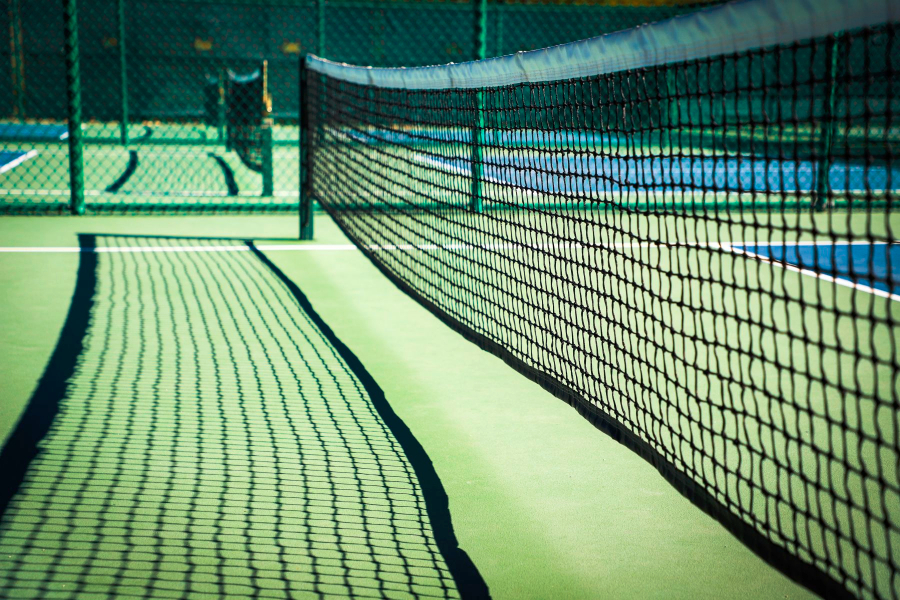
How High is a Pickleball Net?
The net is 36” high at each sideline and reduces to 34” in the middle. This encourages play towards the middle of the court. Where the net is lower, there is less chance of an error.
The net should extend at least 1 foot past the edge of the sideline. This means your net should be at least 22 feet long.
Permanent posts are sunk into the ground to support the net. These steel posts are set 22 feet, 4 inches apart. They are generally steel poles with an outside diameter of 2-3/8 inches.
It is best to use rust-resistant materials whenever possible as these posts will be exposed to the elements continuously on outdoor courts.
Installers recommend installing the posts in a block of concrete with a ground collar to ensure that the post remains firmly in place.
You can expect the posts to be approximately 50 inches long and are usually painted black or dark green.
What is the Height Clearance for a Pickleball Court?
Pickleball is played both inside and on outdoor pickleball courts.
It is recommended that an indoor vertical height clearance of between 18- and 20-feet is maintained above the court.
The out-of-bounds area should also have at least 10 feet one the sides from the lines to avoid any issues from follow through of chasing a ball down.
How Does a Pickleball Court Compare to Other Courts?
To get an idea of the scale of pickleball courts, here’s a comparison between them and other courts:
- A Doubles Badminton court is the same size as a pickleball court, it’s just the net height that varies.
- You can fit 4 pickleball courts inside a standard tennis court. But you can only fit a single pickleball court inside a volleyball court.
- 4 pickleball courts fit cross-wise inside a basketball court (92 ft x 50 ft).
- Indoor soccer (Futsal) pitches can incorporate 4 pickleball courts.
11 Tips For Setting Up your Pickleball Court
Pickleball is the type of sport that works well for both permanent and temporary courts. With that in mind, here are a few tips for setting up pickleball courts:
- Make sure that there is enough space around the court to allow for a reasonable out-of-bounds area. Try to have somewhere between 5-feet and 14-feet behind the baseline and to each side of the court. Anything less and things will start to get really tight. High level and athletic players will make good use of more space so it’s best to go bigger rather than smaller.
- Converting tennis courts will allow you to create a maximum of 4 well-sized pickleball courts inside the tennis court footprint.
- If your intention is to create a multi-court pickleball facility, then ideally, pickleball fencing should surround the entire court and there should be adequate padding between each court.
- By installing lights, you’ll extend playing hours, but care should be taken in residential areas as neighbors may object. You’ll also need the necessary permits before you can go ahead with construction.
- If you’re marking out an unmarked surface, then measure and mark a straight 20-foot line. At a right angle, measure a 44-foot and mark it. Now measure another 20-foot line at right angles to your 44-foot line. Join the lines and check that the diagonal length is 48’4″. You’ll know then, that your court is squared off.
- If you wish to mark out a DIY pickleball court, select a suitably hard surface, free of bumps and holes. Avoid grass and clay as the ball won’t bounce much at all. Pickleballs are unlike tennis balls. They are made of perforated plastic like a wiffle ball and don’t bounce very high on grass and clay surfaces.
- Portable nets are adequate for casual games on temporary courts.
- It is preferable to have fencing around your court if it is outdoors if space permits. This way you won’t be chasing balls all over the place when they go out of bounds.
- The ideal surface materials for permanent pickleball courts are smooth concrete, painted with polyurethane or an acrylic coating.
- Courts come in all colors, you just need to make sure that the line marking stands out in contrast to the playing surface. Lines are usually white.
- Under-utilized basketball, tennis or badminton courts are ideal candidates for conversion into multiple pickleball courts. You naturally need permission from the owners before marking the surface.
Final Thoughts
Pickleball courts are simple and easy to mark out.
If you have access to a hard, flat surface that is free of imperfections, then your task is made a lot easier.
Tennis and basketball courts are popular as they provide plenty of space to put multiple pickleball courts together with enough out-of-bounds space to play comfortably.


